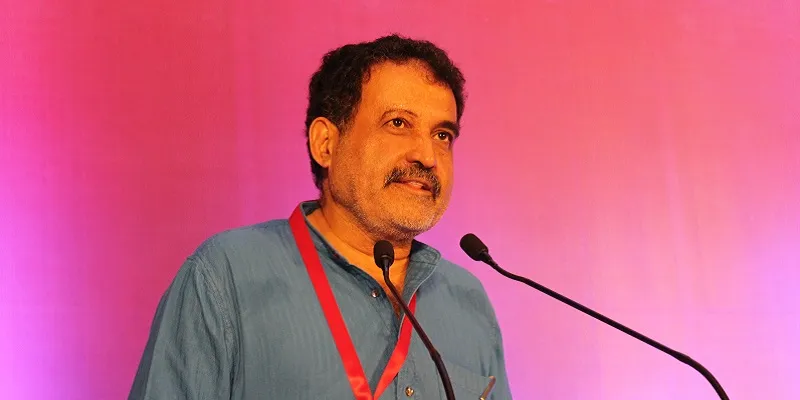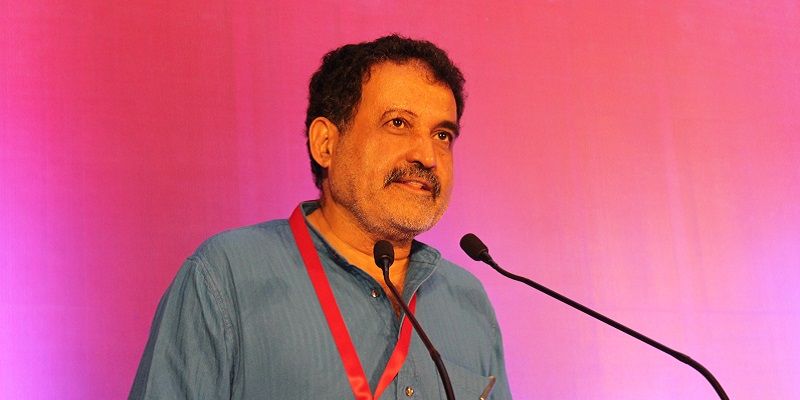How India can be a $10 trillion economy by 2030
“Tech entrepreneurship will drive India’s growth. Today, India is ready to be one of the top five economies in the world. We already are in the top three in PPP (Purchasing Power Parity), but in terms of the current value of GDP we will be top five at 2030,” said Mohandas Pai, Founder, Aarin Capital, at NSE Tech Conclave, which was organised by the National Stock Exchange (NSE), in association with YourStory, on Tuesday.

Pai said India today is poised to become a $10 trillion economy by 2030. Backing his statement, Pai pointed out different ways in which India is positioned in the growth trajectory. The factors that will make India a $10 trillion economy, he says, are:
- An economy that is consistently growing
India’s GDP grew from $275 billion to $2.25 trillion between 1991 and 2017. This, Pai said, shows a CAGR (compounded annual growth rate) of 8.5 percent in dollar-terms over 26 years. Other than China, no other economy has been able to maintain this. India’s saving rate is at 32 percent. “If we look at the data, we have a rocking economy that is growing consistently,” said Pai.
- By 2021 emerging markets will have a share of GDP larger than OECD
The world is changing. The global GDP is at $77 trillion, and OECD member nations are leading the global economy. But now, emerging markets are grabbing a larger share of the world GDP. “They will be the growth drivers,” said Pai.
China opened its economy in the 1970s, and India in the 1990s. China’s GDP is at $12.26 trillion at present and that of India is at $2.2 trillion. China's per capita income is at $8500, while that of India is at $1500. “China’s growth shows us what we can do if we work in the right direction,” said Pai.
- India has a strong industrial base
India is the third largest producer of steel in the world, and other indicators of industrial growth, such as cement production and telecom are growing strong, Pai said. He added India makes 20 million two-wheelers and 3.5 million four-wheelers annually. “These are indicators of a real economy, with much lower prices,” said Pai.
- A young population
By 2020, the average age in India will be 29 years, Europe at 45 years, China at 35 years, and the US at 31 years. We have a young consuming population for the next 15 to 20 years. “We are the youngest country in the world with a sizable population,” added Pai.
- Growing higher education infrastructure
India has 800 universities, 51,000 colleges and 35 million young people in college. Close to 80 lakh graduates pass out of colleges every year. “We produce one of the largest number of professionals - over 50,000 doctors pass out every year,” said Pai. By 2030, there will be close to 70 million young people in colleges, making it the largest college going population in the world.
- India has adequate savings and investments
Savings, Pai said, have stabilised and consumption has gone up. Close to 70 percent of GDP is consumption, and 30 percent is investments. Also, the GDP from the services sector gives is higher, while the manufacturing sector contributes 26 percent to the GDP.
- Startup ecosystem will help create a $10 trillion economy
The Indian startup ecosystem has grown by 270 percent. We have over 26,000 startups, and we are the second largest ecosystem in the world. Every year, over 6,500 to 7,000 startups are formed in India, of which 1,200 get funded. These have created close to $90 billion in terms of value. India startup ecosystem is dominated by Bengaluru, Delhi and Mumbai.
- IT sector contributes $175 billion in revenue
This year, IT services are expected to be worth $121 billion, and 60 percent of the outsourcing comes to India. There are 4.2 million people employed in the IT services sector. Of the top 10 software services companies in terms of market value, five are Indian. It is from these IT services companies that the young employee base gets trained in new technologies.
By 2025, Pai said there will be 100,000 startups in India, creating close to $1 trillion in value. He said everywhere in India, young people are looking to startup and transform the world around them.











